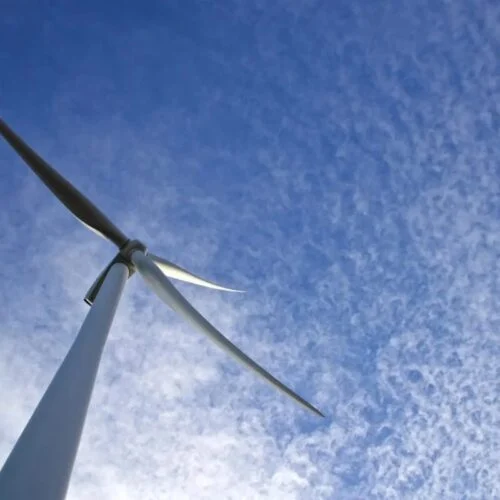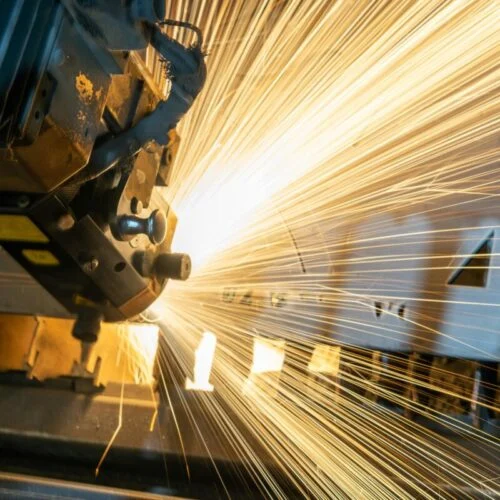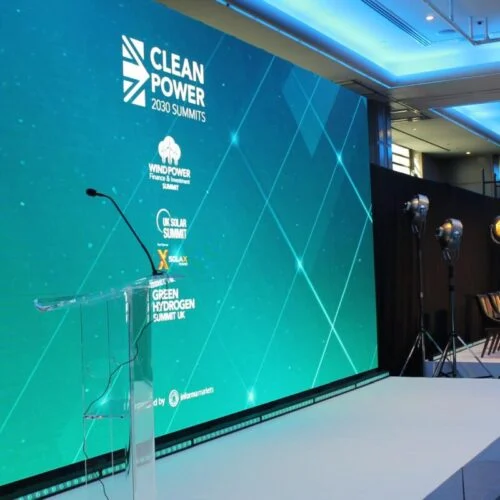In this contributed blog, Chris Hazell, co-founder and CEO of battery pack manufacturer Fellten, looks at the challenges slowing down the transition to EVs and the novel technologies overcoming them.
EV sales numbers are becoming so consistently impressive that the mainstream media is now reluctant to report on what is, in essence, boring news.
Recent data from UK thinktank New AutoMotive reports that over one in four new cars sold in February was fully electric and battery electric vehicle (BEV) registrations were up 37.4% on last year, representing a solid 25.66% market share. But here’s the killer stat: in February EVs and hybrids sales combined outsold petrol cars.
This stellar growth is driven by billions in investments from car manufacturers, with Volkswagen, Peugeot, Mini and Renault all recording triple-digit percentage increases in EV sales compared to February 2024. The number of electric Minis sold skyrocketed from just 82 last February to over 1,300 now. And that’s because the electric Mini is more refined and more desirable, with a longer range. European car makers are beginning to understand that the market wants small EVs, not hulking, two-tonne SUVs.
While increasing EV sales is great news, it creates other challenges like grid capacities and planning frameworks. With so many EVs on our roads, we need more charging infrastructure to keep pace. But slow grid connections and archaic planning regulations are hobbling progress. We need cutting-edge solutions to bridge the gap between demand and infrastructure to enable rapid deployment in environments where permanent installations may not be feasible, too problematic and time-intensive to deliver, or make a profit.
Stationary storage to relieve pressure
Andy Palmer, ex-Aston Martin boss, creator of the Nissan Leaf and founder and CEO of Palmer Energy Technology, is bullish on stationary storage and sees it as one of the missing links to ultimately help move us away from fossil fuels.
“A lot of focus, and unnecessary emotions from both sides of the battle ground, are vented at EVs. What a lot of people miss is the vital importance of batteries that don’t move, stationary storage batteries. Batteries are the true enabler of a move towards an electrified power system, one that delivers a sustainable future for us all,” notes Palmer.
We’re in a new world, where fresh solutions must be found to help us upgrade and evolve the energy transition. Mobile stationary storage is the best of both worlds that can replace diesel generators, help charge point operators get metal in the ground quicker, balance the grid and act as a stopgap until market policies have improved. Legacy hurdles need new world solutions, and the energy transition is the opportunity of a lifetime for true, sustainable innovation.
Rising demand for electric vehicles is putting unprecedented pressure on existing charging infrastructure. Our creaking grids need serious upgrades. With grid connections and new site approvals often taking years, not months, there’s an urgent need for solutions that can be deployed swiftly and flexibly, with the lowest environmental impact.
“Battery Energy Storage Systems (BESS) are the missing link when connections to the grid are difficult, expensive or slow. For Charge Point Operators (CPOs), being able to deploy fast battery storage at charging hubs gives enormous flexibility and lower costs,” said Quentin Willson, founder of FairCharge, and an EVUK advisory board member.
“And static battery storage units can be made from recycled, second life batteries in recycled storage containers, so there is a virtuous circle in their usage. We should be building a huge BESS industry in the UK right now. It’s such an obvious growth opportunity.”
One of the UK’s leading ultra rapid charge point operators, Osprey, highlighted the myriads of hurdles to ramping up deployment and grid reform.
The main barrier CPOs like Osprey and others have connecting to the grid today is a lack of human resource and of smooth, standardised processes for EV charging in the permitting departments of local authorities and some DNOs. Osprey has a large pipeline of agreed sites that face long delays in planning and Highways approval. Other CPOs also have many charge points installed that are waiting – again for many months – for grid operators to connect power to the project. Impossibly slow grid connections have become a critical national infrastructure issue.
“In most cases the power is there for the EV charging infrastructure we plan to install, but the processes and resources are not. We are working collectively with government through ChargeUK to remove these barriers and have seen some progress with new measures announced at the end of 2024, which we are now working with government to implement effectively,” said Ian Johnston, Osprey’s CEO.
Scalable energy storage for varied applications
Circumventing grid connection difficulties, off-grid charging capacity offers to accelerate electrification for fleets.
An example of how this can be done comes in the shape of the Charge Qube, delivered by Bristol-based Fellten. A modular, containerised energy storage and EV charging system that can provide overnight fleet charging or supply power at peak times that can operate off-grid or in conjunction with an existing network. The Charge Qube is designed for easy transportation and offers between 150kWh and 450kWh, while a larger option capable of delivering up to 900 kWh is on the horizon.
The Charge Qube is also engineered to circumnavigate any planning restrictions that often delay traditional infrastructure projects. These packs, taken from end-of-life EVs or minor accident-damaged vehicles, retain a high percentage of their original capacity (+85% state of health) and can maintain their performance for up to 25 years when managed correctly between 20-80% charge.
Repurposing EV battery packs for second-life applications not only reduces manufacturing costs but also significantly lowers the carbon footprint associated with producing new batteries.
Ginny Buckley, the chief executive of Electrifying, an electric car advice site, said: “EV batteries have a second, or even third life beyond powering a vehicle and innovative BESS are a perfect example of the new opportunities created by electric vehicles.”
The Charge Qube system is designed to accept direct power inputs from solar panels and wind turbines, maximising the use of green energy to charge vehicles or supply power during peak demand. This renewable-ready design not only reduces reliance on traditional grid power but also facilitates energy arbitrage—storing energy during low-cost periods and releasing it when demand spikes. Such functionality is particularly attractive to businesses seeking to optimise operational costs while advancing their sustainability goals.
While the country’s power grids and planners work to catch up with the rapid pace of EV adoption, businesses looking to decarbonise their transport must look to novel technologies as a solution to a grid-sized problem.





